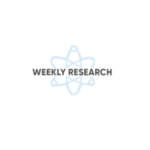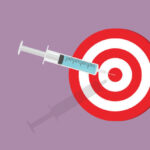Remote patient monitoring (RPM) and telehealth in rural communities address geographical barriers to quality healthcare. In fact, several studies have been conducted on the effectiveness of telehealth in rural communities, showing consistently positive results. For example, one rural Tennessee teleoncology program study found that 95% of patients who initially had in-person visits and used telehealth for cancer care for half of their visits said the experience was as good as or better than in-person appointments.
Telehealth and Remote Patient Monitoring in Rural Communities
This comprehensive guide explores 7 significant benefits of remote patient monitoring and telehealth use cases in rural communities.
- Provides rural communities with better access to high-quality healthcare.
- Offers savings for both patients and the healthcare system.
- Keeps organizations ahead of expected medical staff shortages.
- Opportunity for increased revenue in medical facilities.
- Helps lighten the workload.
- Telehealth funding programs are available to help rural providers.
- Remote health increases patient satisfaction.
1) Remote Patient Monitoring and Telehealth in Rural Communities Offer High-Quality Healthcare
Health inconsistencies occur more often in rural populations than urban populations due to a lack of health care services, contributing to higher rates of chronic disease, poor overall health, and lower quality of life. Similarly, transportation as a barrier to adequate healthcare significantly correlates with the need to see a doctor more often, according to Health Psychology Research. When remote monitoring and telehealth in rural communities is available patients don’t have to worry about transportation to-and-from their appointments.
The first way rural healthcare benefits from remote patient monitoring is that, unlike telehealth, remote patient monitoring has no geographic location restrictions, which expands access to preventive care for chronic conditions. And all Medicare recipients are eligible for RPM services if the device can reasonably apply to treatment for the patient’s condition.
Frequent telemonitoring and interpretation of patient clinical status by a healthcare professional have enabled earlier interventions to treat the deterioration of conditions. More importantly, remote monitoring benefits rural healthcare by reducing all-cause mortality and hospitalization in patients with heart failure.
Furthermore, a recent large study found that when comparing behavioral health treatment delivered to a population of patients in rural, underserved communities, there were no clinical or statistical differences in improvements in depression or anxiety symptoms between patients treated via telemedicine vs. in-person.
Ultimately, telehealth is bridging the gaps in the lack of access to quality healthcare and transportation for people in rural areas, allowing providers to meet rural patients’ timely healthcare needs. However, it is important to note that digital health literacy may be needed. When patients understand digital health tools, they can actively manage their health, make informed decisions, manage chronic conditions, and understand treatment options.
2) Telehealth & RPM: Savings for Rural Patients and Providers
It is no surprise that telehealth in rural communities generates cost savings. Jefferson Health found that synchronous audio-video telemedicine consultations resulted in short-term cost savings by diverting patients from more expensive care settings. Telehealth saves costs since most health concerns are resolved in a virtual consultation. Healthcare costs often occur due to reduced readmissions and avoidable emergency department visits in rural communities.
Another way healthcare benefits from remote patient monitoring and telehealth is because small rural hospitals and clinics can keep beds open for patients with critical care needs and continue providing quality healthcare services at lower costs. Likewise, patients experience financial savings by avoiding long-distance travel costs for specialist care.
Clinicians can use RPM to monitor reading trends and observe how patients respond to medications. Additionally, they can set a threshold to receive real-time alerts when a patient’s vital sign reads too high. Staying on top of critical sign data with remote physiological monitoring can help avoid costly ambulatory patient transfers.
Generally, the earlier complications are identified, the more affordable they are to treat. Thus, remote patient monitoring minimizes overall healthcare costs. RPM solutions shift the focus from reactive care to preventive care, and overall, patients avoid costly trips to the emergency room and rehospitalization.
3) Stay Ahead of Staff Shortages with Telehealth and RPM
The COVID-19 pandemic increased medical staff shortages across the United States. The American Hospital Association called the growing need for healthcare workers a national emergency. The statistics published in the Journal of the American Medical Association further substantiate this claim. Just below 32% of doctors reported feeling burned out in 2019, but by 2022, that number rose to 40%. Additionally, nearly 41% of nurses reported burnout in 2019, which grew to just over 49% in 2022.
Meanwhile, America is aging faster. The Census Bureau reports that 16.8% of the population was aged 65 or older in 2021, predicting that number will grow to 21% in 2030. Elderly and Alzheimer’s disease patients often require more hospital, assisted living, and general medical care. In addition, geriatric patients are more likely to have chronic conditions such as diabetes and heart disease. This means staff shortages can add to poor health outcomes for this aging population, especially in rural areas.
Fortunately, rural healthcare will benefit from telehealth, remote patient monitoring efficiencies, and simplified workflows for healthcare teams. On the other hand, aging populations drive volume. With more patients to care for, the opportunity to generate revenue increases. Innovative practices that offer cutting-edge technology and programs in RPM and telehealth in rural communities learned early on how to handle workflows efficiently.
4) Remote Patient Monitoring: Increased Revenue in Rural Practices
CMS allows “incident to” billing for certain remote patient monitoring services. This means a service can be performed under the supervision of a physician and is billed to Medicare under the physician’s name. This provides Medicare reimbursement for remote physiologic monitoring treatment management services, 20 minutes or more of clinical staff/physician/other qualified healthcare professional time in a calendar month requiring interactive communication with the patient/caregiver during the month.
Remote health solutions such as remote patient monitoring is less time-consuming for healthcare organizations. This adds extra time in the day for more appointments. RPM and telehealth in rural communities also reduces the chance of missed appointments. That means less missed revenue for your practice and more time for patient preventive care. Therefore, healthcare providers must consider remote patient monitoring before staff shortages increase.
5) Remote Patient Monitoring Benefits Workload and Workflow
Telehealth research surrounding rural and remote communities during the COVID-19 pandemic has identified three concerns:
- Lack of staff
- Need for coordinated health services
- Operational and facility issues
Remote patient monitoring services alleviate these concerns. RPM lightens the workload for rural healthcare teams because RPM saves time and reduces costs for both the patient and the care provider, thus helping clinicians care for more patients without necessarily spending more time.
To help create more efficient workflows, healthcare organizations may outsource remote patient monitoring services to third-party remote patient monitoring companies. It’s essential to understand the processes and operations behind remote patient monitoring. This easy 5-step guide will help you understand the procedures and responsibilities required for remote patient monitoring.
6) Telehealth in Rural Communities and Funding
Telehealth and remote patient monitoring technology are now widespread, providing medical care remotely, especially to patients in rural areas. The Health Resources and Services Administration lists several grant programs that fund rural telehealth projects. The HRSA focuses on improving healthcare, expanding access, and improving health outcomes. Their telehealth grant programs promote and advance telehealth services in rural areas.
In addition, the Health Resources & Services Administration (HRSA) website lists grant opportunities for telehealth and broadband-related programs with deadline dates. For instance, during the COVID-19 pandemic, funding opportunities were available for rural tele-emergency services, emphasizing tele-stroke, tele-behavioral health, and EMS telemedicine.
7) RPM and Telehealth in Rural Communities and Patient Satisfaction
One significant benefit of RPM and telehealth in rural communities is increased patient satisfaction. Telehealth services, such as remote patient monitoring, help optimize preventive care outcomes by focusing on early intervention and timely treatment. It is much less stressful for a patient when taking vital sign readings from the comfort of their own home.
The Pittsburgh health system (UPMC) developed an RPM program for a spectrum of health acute, advanced, and chronic conditions. For example, patients with heart disease used remote patient devices, including scales, BP cuffs, pulse oximeters, and glucometers for diabetes management. After tracking 1,500 Medicare patients for a year and a half, the health system found that 76% were less likely to be readmitted to the hospital. Most significant was that patient satisfaction and compliance were over 90%.
It is important to note that some studies show low RPM patient satisfaction results when inadequate training on telehealth technology and internet connection issues exist. This is where RPM device quality and Bluetooth vs. cellular technology come into play. How do you know which option is the best for your patient population?
RPM and Telehealth in Rural Communities: A Case Study
Adventist Health Saint Helena Hospital, a rural hospital in northern California, expanded telehealth services during the pandemic to address the needs of its rural and Latino populations. They focused on promoting equitable access to health services and social responsibility. To ensure accessibility for those with limited digital access and language barriers, the hospital expanded digital health services through non-digital mobile health centers, testing, and vaccination clinics.
For instance, the St. Helena Hospital Foundation transformed its mobile health van into a COVID-19 vaccination platform just before the pandemic hit. These innovative approaches have yielded valuable data on telehealth in rural communities. They also provide insights into the development of technologies, community partnerships, and community-based systems to meet health needs during future natural disasters.
Is Bluetooth or Cellular RPM Best for Rural Populations?
Remote patient monitoring is revolutionizing healthcare for rural patients, allowing them to quickly and easily transmit vital sign data to their physicians. RPM solutions help optimize preventive care outcomes by focusing on early intervention and timely treatment. Before choosing, you’ll want to consider the advantages and disadvantages of cellular and Bluetooth RPM technologies. Ultimately, the better option is the one that works best for your patient population, organizational workflows, and RPM goals.
Potential remote patient monitoring devices include wireless blood pressure monitors, wireless weight tracking scales, wireless blood glucose monitors, wireless pulse oximeters, wireless peak flow meters, wireless thermometers, and more. RPM companies offer various cellular and Bluetooth device types to choose from. Using a cellular gateway for remote monitoring devices expands the choice and flexibility for chronic care, telehealth, remote patient monitoring software, and service companies. Here is a quick summary of cellular vs. Bluetooth RPM medical device benefits.
Bluetooth RPM device benefits:
- Bluetooth is the more cost-effective option.
- Bluetooth devices connect to the internet when a patient cannot access a cellular network.
- A more comprehensive array of Bluetooth devices are available for healthcare providers and patients.
Cellular RPM device benefits:
- Transmits patient health data in the fastest, safest, most reliable ways.
- Easy for the patient
- More likely to remove frustration with no downloading apps or syncing needed.
- Patients can use devices right out of the box for a seamless experience.
Preprogrammed cellular-connected RPM device benefits:
- RPM devices come preprogrammed to work with the gateway, with syncing or app setup required.
- It can support a wide range of devices, not just one brand.
- Simplifies data aggregation from multiple RPM devices, even with various user devices in one home.
Meet a Better Remote Patient Monitoring Experience
It is important to remember that high patient adherence rates are critical to a successful patient monitoring program. Are you looking for a better experience? One that offers the convenience of a cellular hub with many Bluetooth device options for rural patient care? Schedule your free demo with Tenovi, and get ready to meet a better remote patient monitoring experience.






